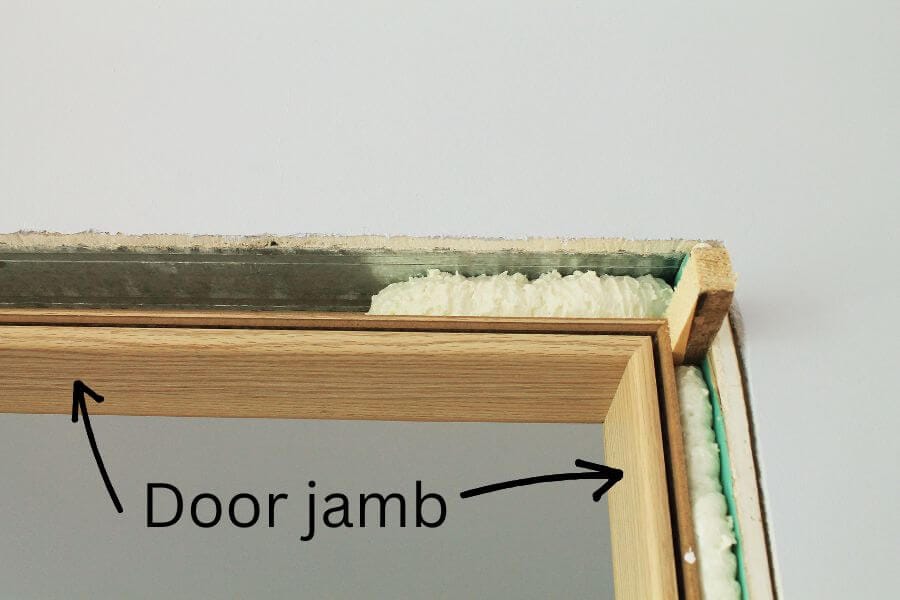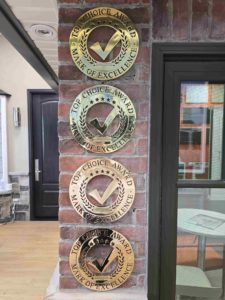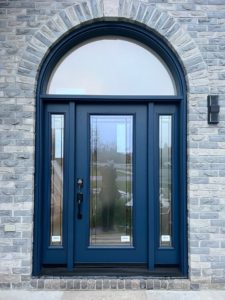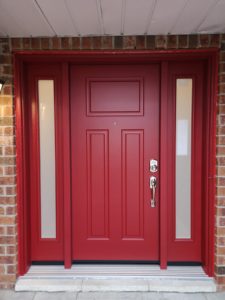Welcome to another insightful guide brought to you by EcoTech Windows & Doors. In this comprehensive article, we delve into the world of door jamb, exploring their importance, features, installation process, and much more. If you’re looking to enhance your knowledge about doors and their components, you’re in the right place.

Picture Source – EcoTech Windows & Doors
What is the Jamb of a Door?
Definition and Function
The door jamb, often overlooked but crucial, is an integral part of any door assembly. It serves as the vertical frame into which a door is secured. The primary function of a door jamb is to provide structural support and create a stable opening for the door.
Types of Door Jambs
- Single Rabbet Jamb: Commonly used in interior doors, this type of jamb has one side cut out to accommodate the door.
- Double Rabbet Jamb: Suitable for double doors, this type of jamb has both sides cut out to allow two doors to meet in the middle.
- Split Jamb: Ideal for new construction, a split jamb allows for easy installation as it can be placed in the opening after the wall is built.
Also Read: Doors: Unlocking the World with EcoTech Windows & Doors
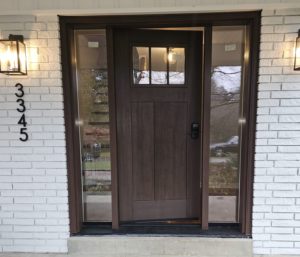
Picture Source – EcoTech Windows & Doors
What are the Features of a Door Jamb?
Material
The material of the door jamb plays a crucial role in its durability and performance. Common materials include:
- Wood: Traditional and aesthetically pleasing, wooden door jambs are popular for their natural look. However, they may require more maintenance.
- Metal: Steel or aluminum door jambs offer durability and resistance to weather conditions, making them a practical choice for exterior doors.
- Composite: Combining the best of both worlds, composite door jambs often consist of a mix of wood fibers and resin, providing strength and resistance to moisture.
Weather Stripping
To enhance energy efficiency, many modern door jambs come equipped with weather stripping. This feature helps prevent drafts, keeping your home comfortable and reducing energy costs.
Pre-Hung vs. Slab Doors
Some door jambs come pre-hung, meaning the door is already attached to the jamb. Others are sold as slabs, requiring separate installation. The choice depends on your preferences and the level of customization you seek.
Also Read: Sliding Doors: Exploring the Elegance and Efficiency

Picture Source – EcoTech Windows & Doors
What Do I Need for a Door Jamb?
Essential Tools and Materials
Before you embark on installing a door jamb, ensure you have the following tools and materials ready:
- Measuring Tape: Accurate measurements are crucial for a proper fit.
- Saw: Depending on the material of your door jamb, a saw is suitable for cutting wood, metal, or composite material.
- Level: To ensure your door jamb is installed straight and plumb.
- Shims: These small wedges help in adjusting the jamb for a perfect fit.
- Screws or Nails: Choose the appropriate fasteners based on your jamb and wall material.
- Weather Stripping: If not included with the door jamb, weather stripping can be added for enhanced insulation.
Also Read: Front Doors: Enhancing Your Home’s Appeal and Security

Picture Source – EcoTech Windows & Doors
Is a Door Jamb Necessary?
It is more than just necessary; it’s a fundamental component of any door system. Without a proper door jamb, the door lacks stability and may not function correctly. Additionally, a well-installed door jamb contributes to the overall security and energy efficiency of your home.
Also Read: Sliding Glass Doors: The Ultimate Guide

Picture Source – EcoTech Windows & Doors
How to Install Door Jamb?
Step-by-Step Guide
Now that we’ve discussed the essential tools and materials, let’s break down the installation process into actionable steps:
1. Measure the Door Opening
Before you begin, measure the height and width of the door opening. Take precise measurements to ensure a proper fit.
2. Select the Right Door Jamb
Choose a door jamb that matches the type of door you have (interior or exterior, single or double) and the material that suits your preferences.
3. Prepare the Opening
Clean the door opening, removing any debris or obstructions. Check for squareness and levelness.
4. Cut the Jamb to Size
Using a saw appropriate for the material, carefully cut the door jamb to fit the dimensions of the opening. Double-check your measurements before making the cuts.
5. Install the Jamb
Place it in the opening and secure it using screws or nails. Use a level to ensure the jamb is plumb and straight.
6. Adjust and Shim
If necessary, use shims to make small adjustments to the positioning of the door jamb. This step is crucial for achieving a snug fit.
7. Attach the Door
If your door jamb is pre-hung, follow the manufacturer’s instructions to attach the door to the jamb.
8. Install Weather Stripping
Enhance insulation and energy efficiency by installing weather stripping around the edges of the door jamb.
By following these steps, you can ensure a proper and secure installation of your door jamb, contributing to the overall functionality of your door.
Also Read: Exterior Doors: Enhancing Your Home’s Appeal and Security
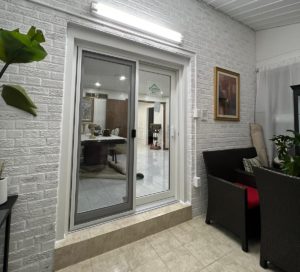
Picture Source – EcoTech Windows & Doors
What is the Difference Between a Door Casing and a Door Jamb?
Distinct Roles
While casing and jamb are both integral to the door assembly, they serve different purposes.
- Door Jamb: It is the vertical frame into which the door is secured. It provides structural support and stability to the door.
- Door Casing: Also known as trim or molding, the casing is the decorative frame that surrounds the door jamb. It adds a finished look to the door and covers the gap between the jamb and the wall.
Material and Aesthetics
- Material: Door jambs are often made of sturdy materials like wood, metal, or composite, prioritizing strength and stability. Door casings, on the other hand, are typically made of wood and serve a more aesthetic purpose.
- Aesthetics: While door jambs focus on function, door casings contribute to the visual appeal of the door and the surrounding space. They come in various styles and designs to complement different architectural themes.
Installation Sequence
- Installation Sequence: The door jamb is installed first, providing the structural framework for the door. Once it is securely in place, the door casing is added as the finishing touch.
Understanding the distinction between casing and jamb helps homeowners make informed decisions about both the structural and aesthetic aspects of their doors.
Also Read: Fiberglass Doors Installation: The Ultimate Guide
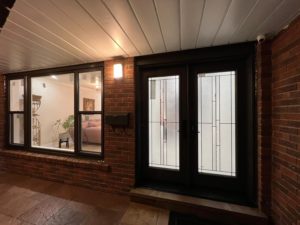
Picture Source – EcoTech Windows & Doors
Where is the Door Jamb Located?
To identify the location, you need to understand the anatomy of a door. The jamb is positioned vertically on either side of the door opening, creating a frame that holds the door in place. Additionally, the jamb extends horizontally at the top to complete the frame.
When standing in front of a closed door, the vertical components on the sides are the door jambs. The horizontal piece at the top is known as the header or lintel. Together, these elements form the door frame.
Also Read: Sliding Patio Doors: Embracing Elegance and Functionality

Picture Source – EcoTech Windows & Doors
What is a Composite Door Jamb and Laminated Door Jamb?
Composite and laminated jambs are two types of jamb materials that offer specific advantages in terms of durability, stability, and resistance to various environmental factors. Let’s explore each type in more detail:
Composite Door Jambs:
Material Composition:
- Wood Fiber and Resin: Composite door jambs are typically made from a combination of wood fibers and resin. This blend creates a material that retains the natural look of wood while benefiting from the added strength and resistance to moisture provided by the resin.
Advantages:
- Durability: Composite materials often exhibit enhanced durability compared to traditional wood. They are less prone to warping, rotting, or insect damage.
- Resistance to Moisture: The resin component helps make composite door jambs resistant to moisture, making them suitable for areas with high humidity or exposure to the elements.
- Low Maintenance: Composite materials often require less maintenance than natural wood, as they are less susceptible to decay and deterioration.
Applications:
- Exterior Doors: Composite door jambs are commonly used for exterior doors where exposure to weather elements is a concern.
- Moisture-Prone Areas: Ideal for installations in bathrooms, kitchens, or other areas where moisture is prevalent.
Laminated Door Jambs:
Material Composition:
- Layers of Material: Laminated door jambs are constructed by bonding multiple layers of material together. These layers can include wood, particleboard, or other engineered materials.
Advantages:
- Strength and Stability: The lamination process imparts increased strength and stability to the door jamb, making it resistant to warping and bending.
- Smooth Finish: Laminated door jambs often have a smooth and consistent finish, providing an aesthetically pleasing appearance.
Applications:
- Interior Doors: Laminated door jambs are commonly used for interior doors where exposure to external elements is limited.
- High-Use Areas: Suitable for areas with high foot traffic or where additional durability is desired.
Also Read: Modern vs. Traditional Front Doors: Choose Your Style
Considerations for Both Types:
Cost:
- Composite: Generally, composite materials may be more expensive than traditional wood but can offer long-term cost savings due to reduced maintenance needs.
- Laminated: Laminated door jambs can provide a cost-effective solution while still offering enhanced durability.
Installation:
- Composite: Installation processes for composite door jambs are similar to those for wood, with attention to proper sealing and weatherproofing.
- Laminated: Laminated door jambs are typically installed like traditional wood jambs.
Maintenance:
- Composite: Requires less maintenance compared to natural wood but may still benefit from occasional cleaning and sealing.
- Laminated: Low-maintenance but may require occasional cleaning to maintain appearance.
Conclusion
In conclusion, the door jamb is a critical component of any door system, providing structural support, stability, and security. Understanding its features, the installation process and its role in conjunction with door casing enriches your knowledge about doors and enhances your ability to make informed decisions when it comes to door-related projects.
At EcoTech Windows & Doors, we prioritize the importance of quality door components. Whether you’re looking for energy-efficient options, durable materials, or aesthetically pleasing designs, we have a range of products to meet your needs. Stay tuned for more informative guides on doors, windows, and everything related to enhancing your home.
Remember, a well-installed door jamb not only improves the functionality of your door but also contributes to the overall comfort and security of your home. If you have any further questions or need assistance with your door projects, feel free to reach out to our expert team at EcoTech Windows & Doors. We’re here to help you make the right choices for your home.


